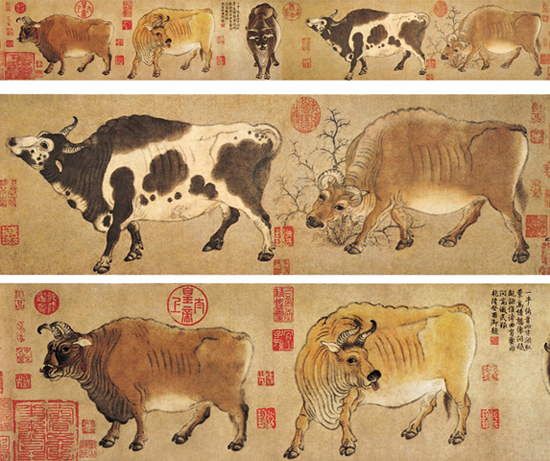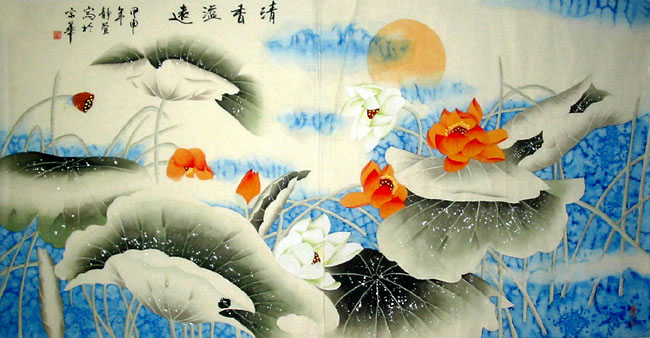Chinese landscape paintings usually centered on mountains. The exquisite Chinese painting--Mountain and river, belongs to Chinese landscape painting. Mountains had long been seen as sacred places in China--the homes of immortals, close to the heavens. Philosophical interest in nature could also have contributed to the rise of landscape painting, including both Daoist stress on how minor the human presence is in the vastness of the cosmos and Neo-Confucian interest in the patterns or principles that underlie all phenomena, natural and social.
"Nymph of the Luo River" by Gu Kaizhi of Eastern Jin Dynasty (317-420) illustrates a romantic poem by Cao Zhi from the state of Wei during the Three Kingdoms period. The copy collected by the Palace Museum in Beijing is a facsimile of the original made during the Song Dynasty (960-1279).
The narrative silk scroll depicts the meeting and the eventual separation of Cao Zhi and the Nymph of the Luo River; the art captures the tension through the composition of the figures, stones, trees and mountains. The painting is one of the most important Chinese artworks, representing the beginning of the development of Chinese landscape paintings.






